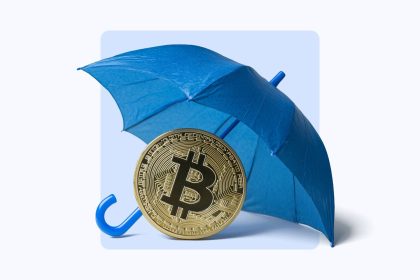Key takeaways
- Student loan interest rates can make a significant difference in how much you make in loan payments over time.
- Where federal student loans always come with fixed interest rates, private student loan rates can be fixed or variable.
- To get a lower interest rate on your existing student loans, you may need to refinance.
Student loan interest rates will vary based on current market rates, the type of loan you’re using and the quality of your (and your cosigner’s) credit. While federal loan borrowers all receive the same interest rate each academic year, other lenders can have a range of rates and change the rates frequently.
Each lender uses different criteria to determine your student loan interest rate, so it’s important to compare multiple loan offers. Knowing student loan interest rates by year can also give you context into how much borrowers paid in the past.
How do student loan interest rates work?
Interest is the extra cost lenders charge you to borrow money, expressed as a percentage of the principal amount of your loan. Your interest rate has a huge effect on your student loans. The higher the rate, the more interest you’ll pay every month and over the course of each loan’s repayment term.
A borrower with a higher interest rate will have higher monthly payments than a borrower with a lower rate, even if they borrowed the same amount. A higher rate also increases the overall cost of your loan.
Typically, a longer repayment term will give you a higher interest rate and vice versa. However, your interest rate also largely depends on your credit score, income and other factors.
In general, interest on a student loan compounds monthly, which means that the amount you pay in a given month is based on the remaining loan amount.
Fixed vs. variable interest rates
Student loan interest rates come in one of two forms: fixed or variable. With many lenders, borrowers can choose between fixed and variable rates when they select a loan. They can also refinance student loans to a fixed or variable interest rate later on.
Fixed interest rates
As the term suggests, fixed interest rates remain the same for the life of your loan, which means your monthly payment will also stay the same. Fixed interest rates provide more certainty, which is worthwhile if you’re not much of a risk-taker, anticipate a modest income after graduation or expect you may need to take out additional loans.
Note that federal student loans only come with fixed interest rates.
Variable interest rates
With variable interest rates, your interest rate can change over time as the current student loan interest rates do. In general, variable interest rates start lower than fixed interest rates, making them more attractive. But they could become more expensive in the long run, especially if you have a long repayment term.
That said, if you have a short repayment period and market rates don’t increase too much during the term, a variable interest rate could ultimately save you money.
Federal vs. private student loan interest rates
Student loans can come from the U.S. Department of Education or private lenders. Federal and private loan rates are determined differently.
Federal student loan interest rates by year
Congress sets the annual federal student loan interest rates. The rates are standardized, meaning everyone who qualifies for a loan in a given year pays the same interest rate.
Here’s how rates have changed in the last five years:
|
Direct Loans for undergraduate students |
Direct Loans for graduate/professional students |
Direct PLUS Loans for parents and graduate/professional students |
|
|
Interest rates for 2024-25 |
6.53% |
8.08% |
9.08% |
|
Interest rates for 2023-24 |
5.50% |
7.05% |
8.05% |
|
Interest rates for 2022-23 |
4.99% |
6.54% |
7.54% |
|
Interest rates for 2021-22 |
3.73% |
5.28% |
6.28% |
Private student loan interest rates
Unlike the federal government, private lenders use risk-based pricing to determine student loan interest rates. When a lender approves you, your interest rate will be determined by factors like your credit score, income, other debt payments and more. If you’re having trouble qualifying for the lowest rates, you could find a student loan cosigner.
As of April 2025, the best student loan rates range from 3.35 percent to 17.99 percent.
|
Lender |
Fixed rate |
Variable rate |
|
College Ave |
3.47%-17.99% |
4.44%-17.99% |
|
Citizens Bank |
3.99%-15.61% |
4.97%-15.59% |
|
Sallie Mae |
3.49%-15.99% |
4.54%-14.71% |
|
SoFi |
3.54%-15.99% |
4.64%-15.99% |
Bankrate insight
Most experts recommend that you max out your federal loans before taking out a private student loan. Private loans carry more risk than federal loans because they don’t provide protections like access to income-driven repayment plans, forbearance and deferment options or student loan forgiveness programs.
What determines your student loan interest rate?
Factors that determine your student loan rates depend on the type of student loan you take out. With federal loans, the two primary factors are the type of loan you apply for and when the loan is disbursed.
With private student loans, multiple factors go into that decision, including:
- The lender: Each lender has criteria for calculating risk and determining how much to charge.
- Market interest rate trends: Lenders may use the SOFR (Secured Overnight Financing Rate) or prime rate to help determine their interest rates.
- Your credit score and credit history: Your credit score provides a snapshot of your overall credit health, but lenders will also review your credit reports to determine how you’ve managed debts in the past. A strong history can help you score a lower interest rate.
- Your cosigner: Applying with a cosigner can help you get a lower rate, especially if the cosigner has good credit.
- Your annual income: Lenders need to understand whether you can afford to make your monthly payments. They’ll use your gross monthly income to understand your ability to pay.
- Your other debt payments: Lenders will use your gross monthly income and your other monthly debt payments to calculate your debt-to-income ratio. The higher the ratio, the higher your chances of getting overwhelmed and missing a payment.
- The loan term: A long repayment term can represent a higher risk to lenders because it gives you more time to potentially miss a payment. It also increases the odds that the lender will miss out on higher interest rates for new loans. As a result, picking a shorter repayment term could help you score a lower interest rate.
It’s also important to remember that the length of time you take to repay your loan significantly impacts how much interest you’ll pay in total. If you choose a 20-year repayment plan over a 10-year one, you’ll pay more overall money because of the extended timeline.
What is a good student loan interest rate?
What counts as a good rate largely depends on the interest rate market when you apply. In some markets, 7 percent might be a great deal, while 4 percent might be a plausible rate in others.
To get a measure of how good an interest rate is, one thing you can do is compare it to the federal student loan rate. Federal loans typically have reasonable interest rates. To get a similar or better rate on a private loan, especially a fixed-rate loan, you need to have very strong credit.
A “good” interest rate can also look different for each borrower. A borrower with an average credit score or a short credit history should not expect to receive the advertised lowest rates. In this case, finding the best interest rate for their financial situation requires comparing personalized offers from several lenders.
How to calculate student loan interest
Calculating interest on your student loans can help you determine how much your loans will cost and show how much you could save by paying more each month. If you want to save time, use an online student loan calculator to do the math.
If you want to do it on your own, the process requires three steps:
- Find your daily interest rate: Take your interest rate and divide it by 365. If your rate is 2.75 percent, your daily rate would be 0.007534 percent.
- Calculate your daily interest accrual: Multiply your daily interest rate by your current loan balance to get your daily accrual charge. With a $15,000 balance, your daily interest would be $1.13.
- Determine your monthly interest charge: Multiply your daily interest accrual by the number of days in your billing cycle. With a 30-day cycle, the monthly charge would be $33.90.
As your principal balance decreases, so will the amount you pay in interest. Also note that if you have a variable-rate loan, your interest rate will fluctuate. Finally, if your lender charges compound interest, you’ll pay interest on both the principal loan amount and any unpaid interest accrued, which would increase your monthly payment.
Bottom line
Student loan rates are the percentage you pay on top of the principal borrowed, and they can come in fixed or variable rates. Federal student loans can often have more attractive rates than private loans and offer more consumer protections. Rates can be affected by various factors, like market changes, your credit score, your debt-to-income ratio and the loan term.
Frequently asked questions
Read the full article here





